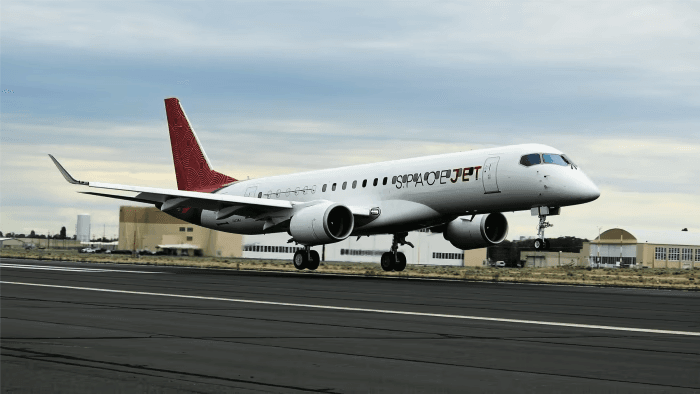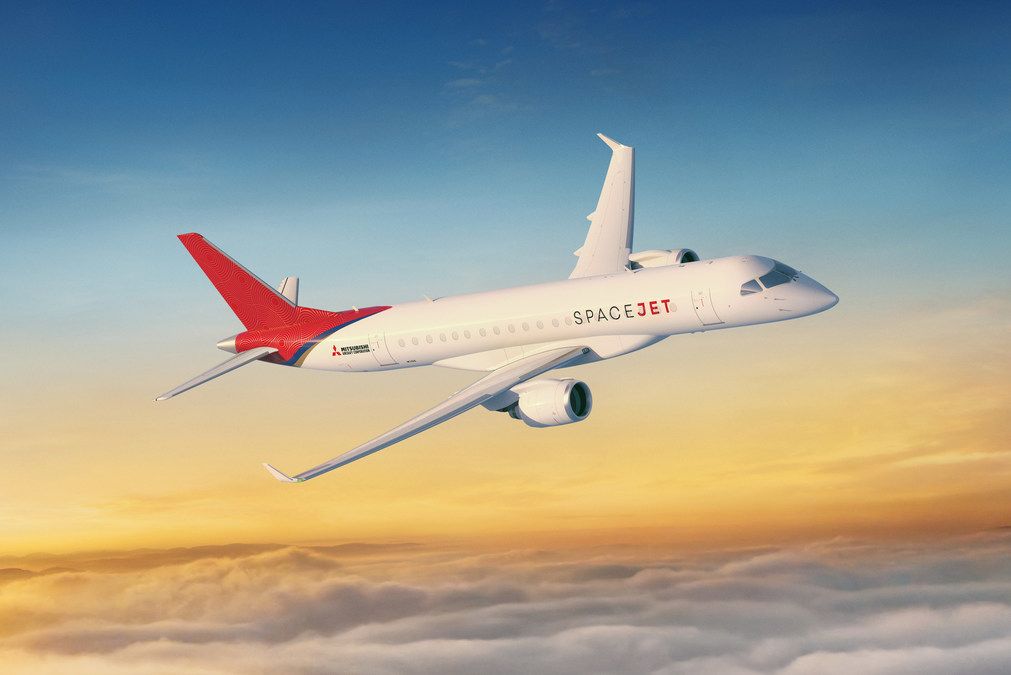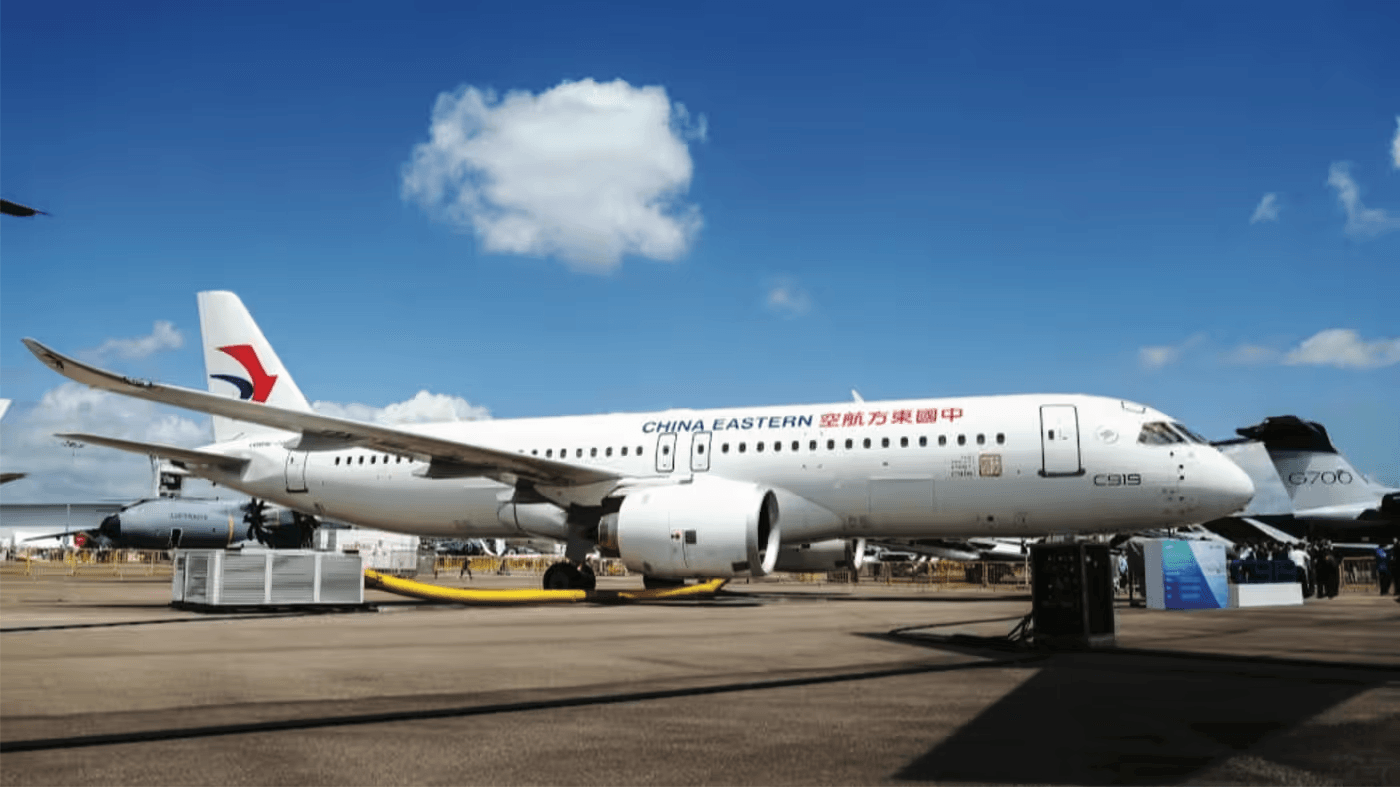Japan Allocates $33 Billion (5 Trillion Yen) to Develop Hydrogen-Powered, Next-Gen Airliner
(Tokyo, Japan) Japan’s Ministry of Economy, Trade and Industry yesterday (Mar. 27) announced a five trillion yen ($33 billion) investment and plan to collaborate with the private sector to develop a next-generation, hydrogen-powered airliner - with the goal of commercialization by 2035 - by “[harnessing] the collective expertise of multiple companies while setting new technology standards,” according to the Eurasian Times.

A photo of the product of Japan’s previous airliner initiative, the Mitsubishi Space Jet, via Mitsubishi Aircraft on X (formerly Twitter), courtesy of The Eurasian Times.
In unveiling the airliner plan, Kazuchika Iwata, vice minister of economy, trade, and industry at the Japanese ministry, said: “We aim to transform the aircraft industry from being component suppliers to one that can take the initiative in providing value-added products,” per the Eurasian Times.
Iwata highlighted the importance of leveraging both public and private knowledge and drawing from previous experiences such as the ill-fated Mitsubishi Heavy Industries’ SpaceJet - a regional jet project by Mitsubishi Aircraft Corporation (MAC) that was cancelled in February of last year and thought to have failed in part because the entire project was shouldered by one company - according to the Eurasian Times.
The Japanese government has initiated the next-gen airliner plan in hopes of avoiding “the pitfalls that doomed Mitsubishi Heavy Industries’ SpaceJet” by encouraging the participation of multiple companies and helping to create technology standards, per Nikkei Asia.
Japan’s new strategy emphasizes a collaborative framework involving established manufacturers such as Mitsubishi Heavy Industries, parts suppliers and automakers at the forefront of hydrogen engine tehcnology, and the Ministry is actively pursuing international cooperation to harness diverse expertise and resources, according to The Eurasia Times.

A rendering of the formerly intended Mitsubishi Space Jet courtesy of The Eurasian Times.
Central to Japan’s next-gen airliner project’s objectives is the exploration of advanced propulsion systems - hydrogen-combustion engines in particular - in the interest of surpassing conventional jet engine technology. Government support for the initiative will extend beyond financial backing, encompassing the establishment of global technology standards, ensuring stable parts procurement and refining testing methodologies, per the Eurasia Times.
Funding mechanisms for the airliner project will rely primarily on sovereign climate transition bonds, reflecting broad industry trends toward achieving carbon neutrality by 2050.
In contrast to Japan’s difficulties in commercial aircraft development - marked specifically by the downfall of the Mitsubishi Heavy Industries’ SpaceJet / Mitsubishi Regional Jet (MRJ) project, which was launched with significant backing in 2008 and canceled last year, in 2023 - China’s aviation industry has comparably soared, considering the success of the Commercial Aircraft Corporation of China (COMAC) and its C919 airliner (the development of which also began in 2008).
For reference, the MRJ had intended to capture 20% of the global market for 70 to 100-seat regional jets by 2013, but was allegedly challenged in major part by changes to U.S. pilots’ union contracts, known as scope clauses, which set a maximum limit of 76 seats on aircraft operating regional routes.
In contrast, COMAC designed the C919 - which competes with narrow-body aircraft such as the Airbus A320 and Boeing 737 series - to target a larger commercial jet segment - those with 160 - 175 seats, and COMAC was allegedly able to navigate design challenges more adeptly than those driving the MRJ were, per The Eurasian Times. Additionally, strong government support and a built-in customer base from state-owned airlines provided crucial momentum for the C919 project.

A photo of one of the Commercial Aircraft Corporation of China's (COMAC) C919s at the 2024 Singapore Airshow (February 20-25, 2024); photo by Taro Yokosawa, courtesy of Nikkai Asia.
The C919 recently debuted outside of the China at the 2024 Singapore Airshow (February 20-25, 2024), at which China’s domestically produced C919 secured 40 new orders from Tibet Airlines. Despite facing U.S. sanctions, the C919 has been successfully in garnering global interest for its development progress and to date has allegedly secured over 1,100 orders from both domestic Chinese and international markets, according to The Eurasian Times.
